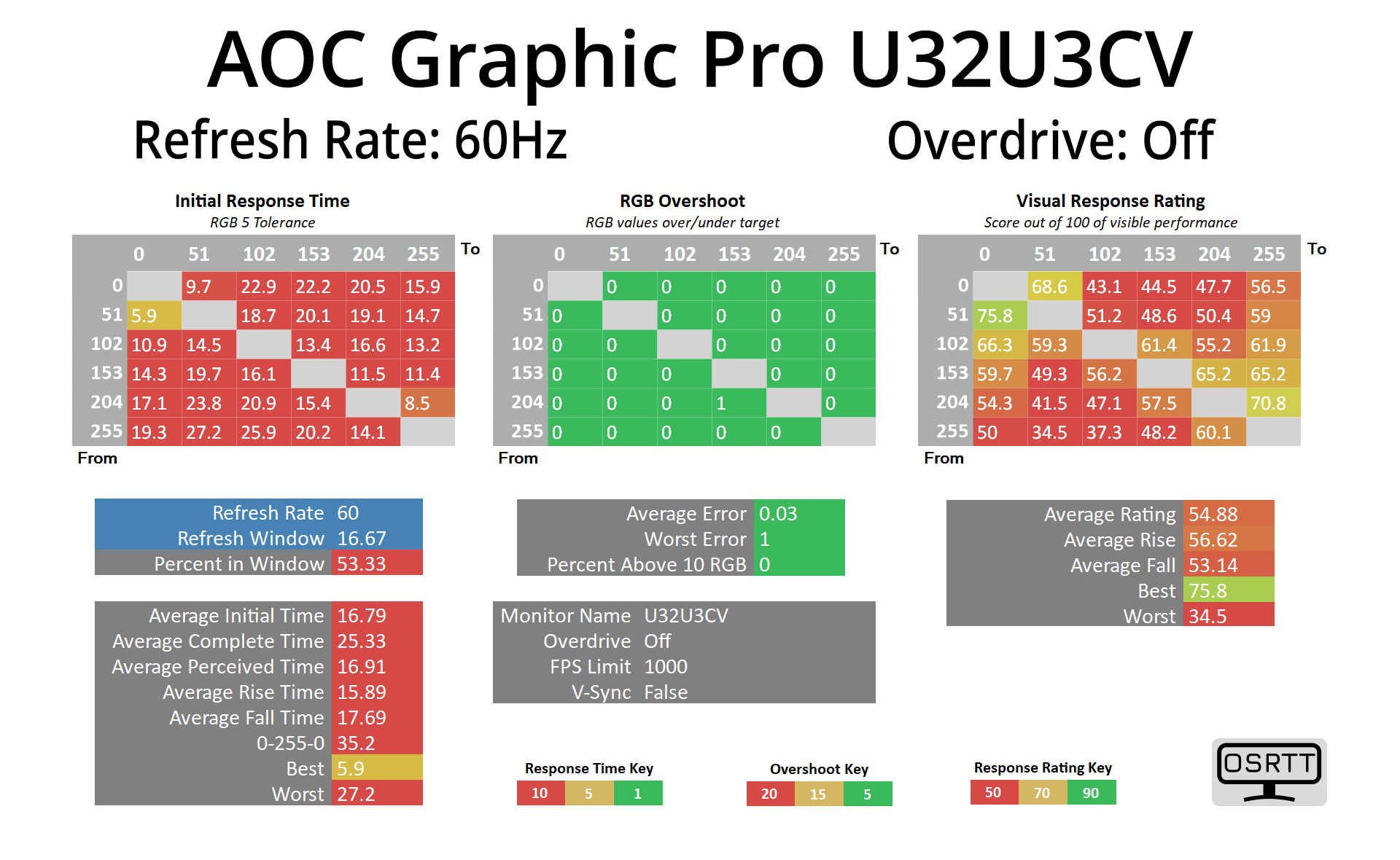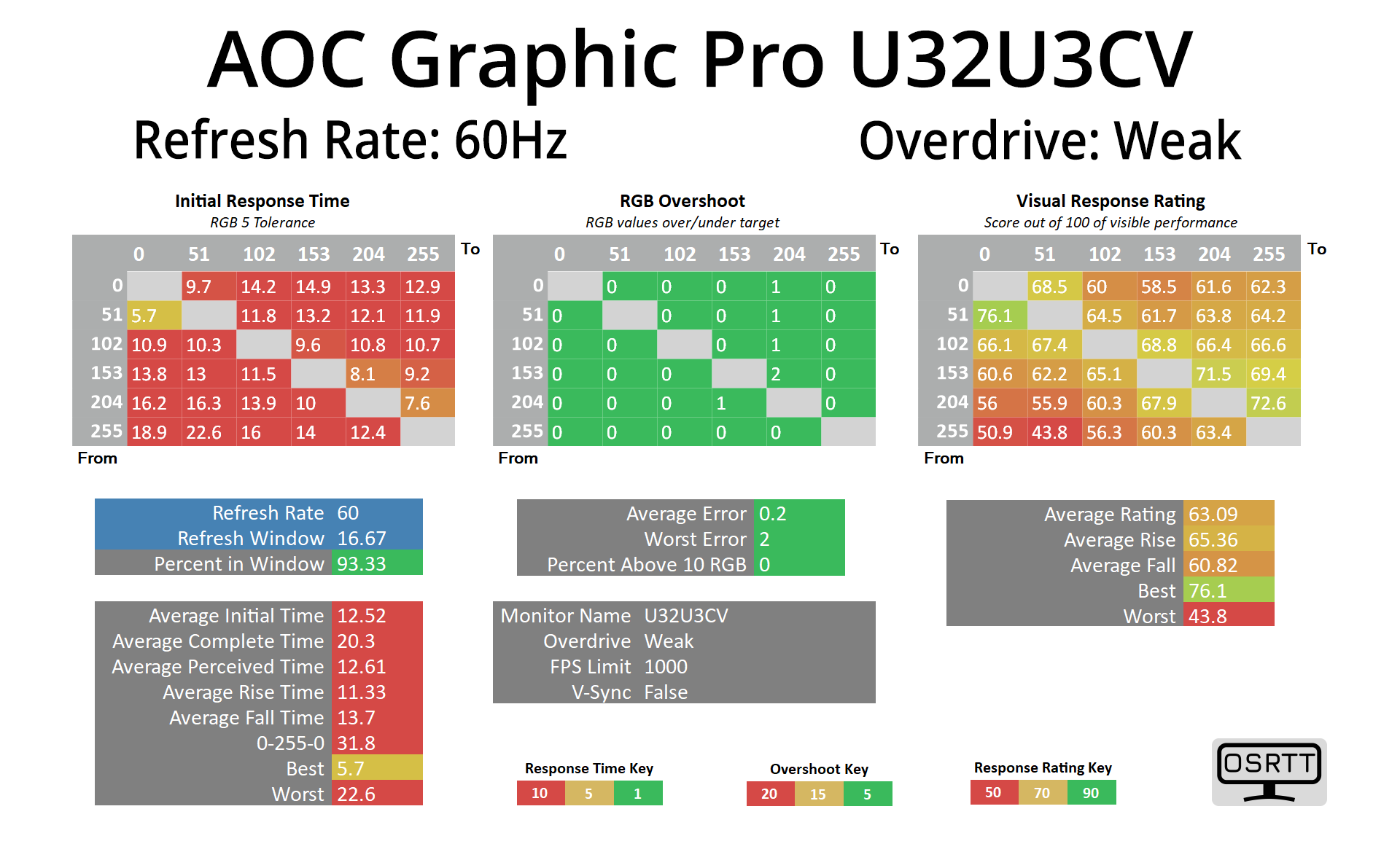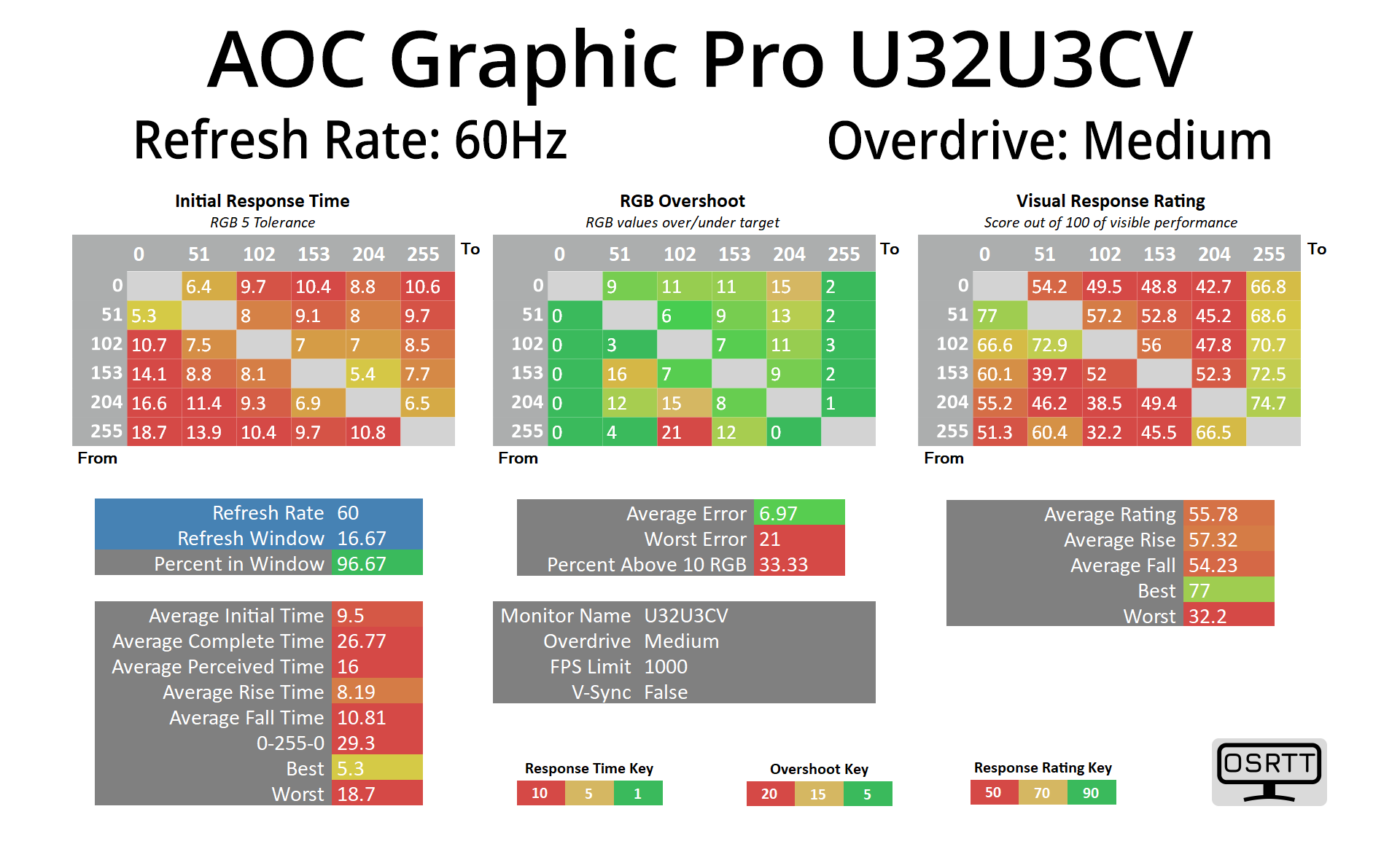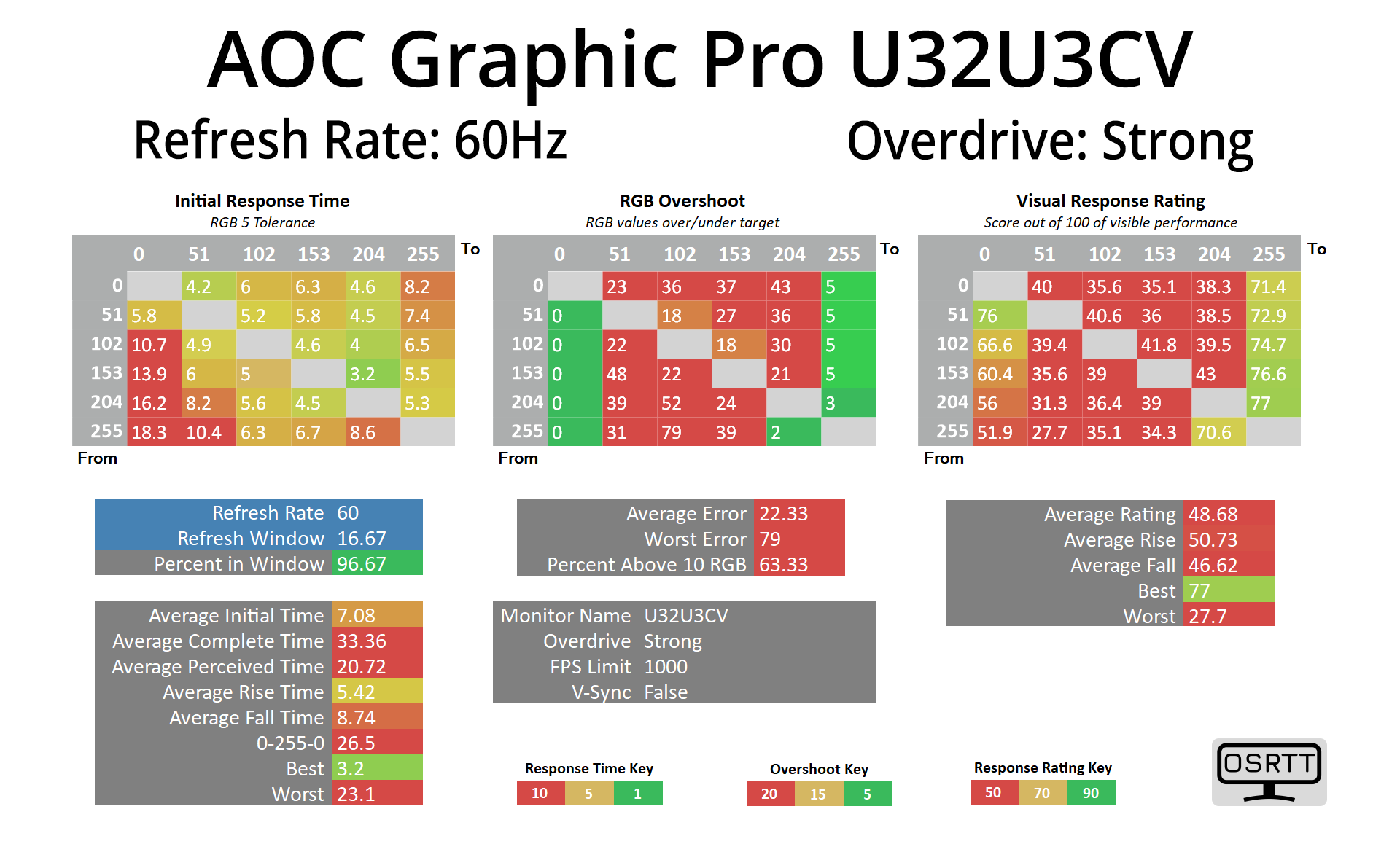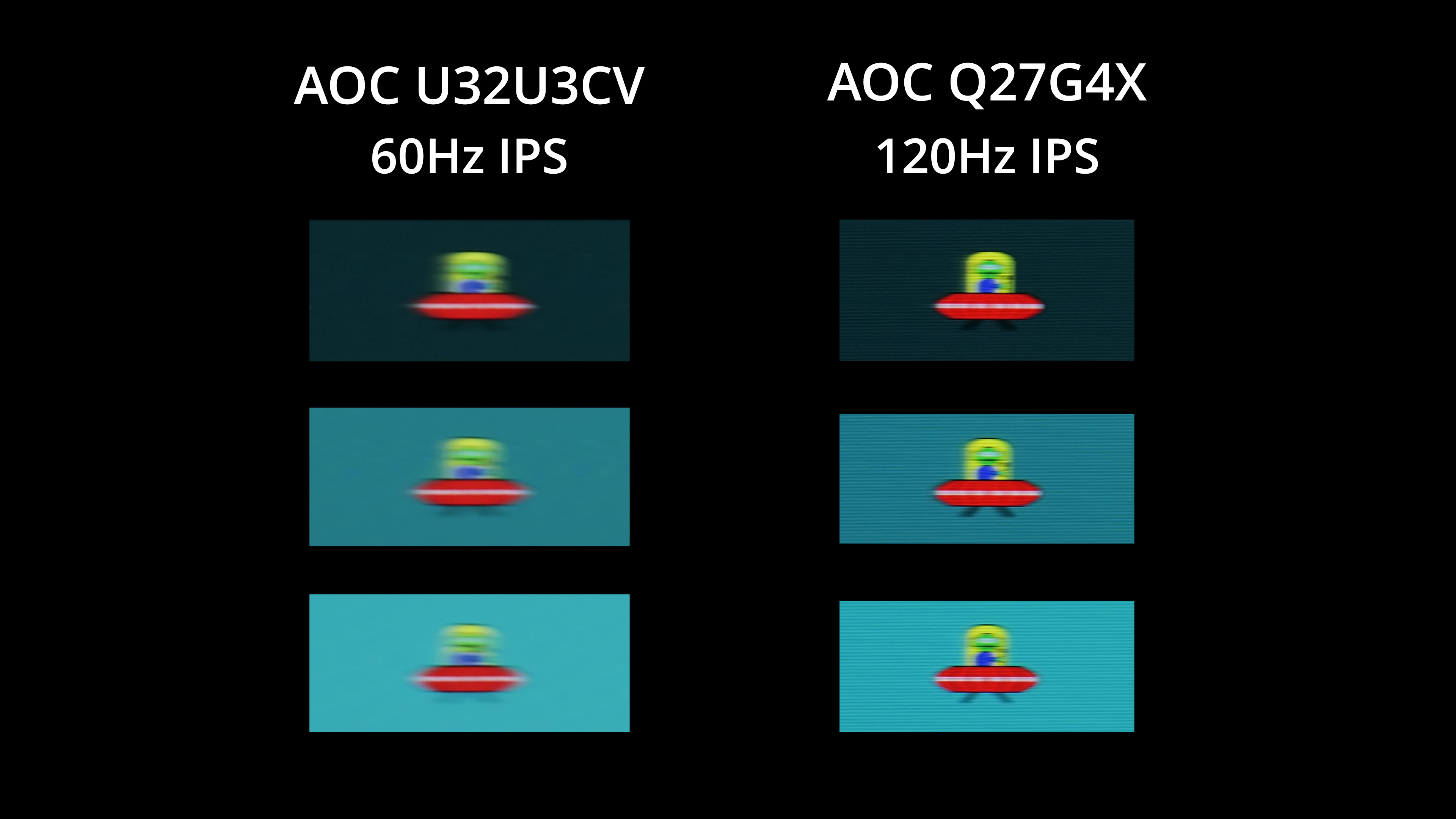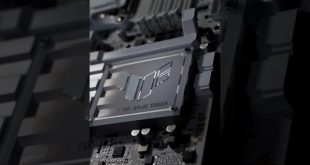Monitor response time testing is a new addition to our reviews, where we use the Open Source Response Time Tool (OSRTT), developed by TechTeamGB. This measures grey-to-grey response times and presents the results in a series of heatmaps, the style of which you may be familiar with from other reviews.
Initial Response Time is the time taken for the panel to transition from one colour to another, where lower values are better. We present the initial response time, so overshoot is not taken into account and is measured separately. We use a fixed RGB 5 tolerance for each transition.
Overshoot is the term given for when a monitor's transition exceeds or goes beyond its target value. So if a monitor was meant to transition from RGB 0 to RGB 55, but it hits RGB 60 before settling back down at RGB 55, that is overshoot. This is presented as RGB values in the heatmaps – i.e. how many RGB values past the intended target were measured.
Visual Response Rating is a metric designed to ‘score' a panel's visual performance, incorporating both response times and overdrive. Fast response times with little to no overshoot will score well, while slow response times or those with significant overshoot will score poorly.
We test the U32U3CV at 60Hz, using all four of the overdrive settings found within the OSD.
I won't focus too heavily on the results here as the U32U3CV is obviously a pro-grade monitor and not a gaming screen. With that in mind, the slow response times aren't really a big deal, though we can recommend the Medium overdrive mode which delivers the best results, falling well within the 16.67ms window for the 60Hz refresh.
I've also included this motion clarity example, just as we did in the ProArt PA27JCV review. We're comparing the U32U3CV to the AOC Q27G4X, a budget 1440p 180Hz IPS screen which I ran at 120Hz for the purposes of this test.
As you can see, there is a fair amount of motion blur visible from the U32U3CV, as we'd expect considering the 60Hz refresh rate. It's not hard to see that the Q27G4X looks substantially clearer. Of course, you can argue as to whether or not a professional screen like the Graphic Pro U32U3CV needs a refresh above 60Hz, and it may not be a factor for many considering this type of screen. Most pro-grade screens that offer a 120Hz refresh rate will be significantly more expensive too, but we thought it was worth including the comparison so you can make your own decision.
 KitGuru KitGuru.net – Tech News | Hardware News | Hardware Reviews | IOS | Mobile | Gaming | Graphics Cards
KitGuru KitGuru.net – Tech News | Hardware News | Hardware Reviews | IOS | Mobile | Gaming | Graphics Cards


